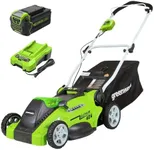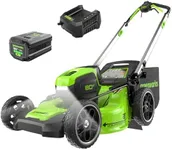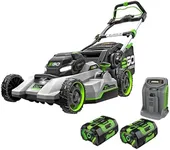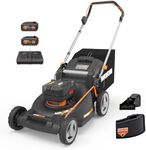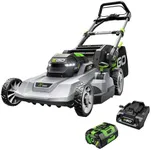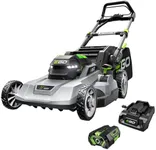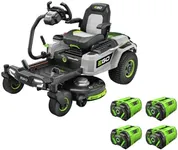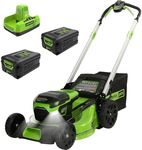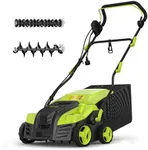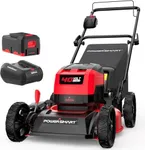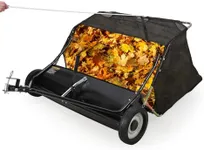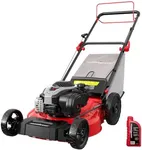Buying Guide for the Best Electric Lawn Mower
Choosing the right electric lawn mower can make maintaining your lawn a much easier and more enjoyable task. Electric lawn mowers are known for being environmentally friendly, quieter, and easier to maintain compared to their gas-powered counterparts. When selecting an electric lawn mower, it's important to consider several key specifications to ensure you get the best fit for your lawn care needs.Power SourceElectric lawn mowers can be either corded or cordless. Corded mowers are powered by plugging into an electrical outlet, which means you have a constant power supply but are limited by the length of the cord. Cordless mowers run on rechargeable batteries, offering more mobility but requiring you to manage battery life. If you have a small to medium-sized lawn and don't mind managing a cord, a corded mower might be suitable. For larger lawns or if you prefer more freedom of movement, a cordless mower would be a better choice.
Cutting WidthThe cutting width refers to the width of the mower's blade and determines how much grass is cut in a single pass. A wider cutting width means fewer passes to mow your lawn, which can save time. Cutting widths typically range from 14 inches to 21 inches. For small lawns, a narrower cutting width (14-16 inches) is sufficient and allows for better maneuverability. For larger lawns, a wider cutting width (18-21 inches) will help you mow more efficiently.
Battery LifeFor cordless electric lawn mowers, battery life is a crucial factor. It determines how long the mower can operate on a single charge. Battery life can range from 30 minutes to over an hour. If you have a small lawn, a mower with a shorter battery life may be adequate. For larger lawns, look for a mower with a longer battery life or consider purchasing an additional battery to swap out as needed.
Cutting Height AdjustmentCutting height adjustment allows you to change the height at which the mower cuts the grass. This is important for maintaining the health of your lawn, as different grass types and seasons may require different cutting heights. Most mowers offer a range of cutting heights, typically from 1 to 4 inches. Look for a mower with easy-to-use height adjustment settings that suit the specific needs of your lawn.
Grass Management OptionsElectric lawn mowers can come with different grass management options, such as bagging, mulching, and side discharge. Bagging collects the grass clippings in a bag for easy disposal, mulching finely chops the clippings and returns them to the lawn as natural fertilizer, and side discharge expels the clippings out the side of the mower. Consider how you prefer to manage your grass clippings and choose a mower that offers the appropriate options.
Weight and ManeuverabilityThe weight and maneuverability of the mower are important for ease of use, especially if you have a lawn with slopes or obstacles. Lighter mowers are easier to push and maneuver, while heavier mowers may offer more stability. If you have a small, flat lawn, a lightweight mower will be easier to handle. For larger or uneven lawns, a self-propelled mower can help reduce the effort required to mow.
Noise LevelElectric lawn mowers are generally quieter than gas-powered mowers, but noise levels can still vary. If you live in a neighborhood with noise restrictions or prefer a quieter mowing experience, consider the noise level of the mower. Look for models that are specifically designed to operate quietly.
